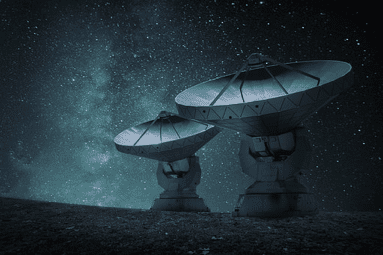The universe is massive. Thinking about space you most probably wonder about the planets, stars and all the components that make it up. The truth though is that it is quite bigger than you might have ever thought.
To put it in context; trying to put a number or any figure when describing the length of the space is literally impossible. To get the scope of how big the space is you might have to use one of the fastest things in the world, light. Travelling at a speed of 186,000miles per second, the light would not get to one end of the universe before the universe ends. The universe is not predicted to end in less than 200bn years to come.
No matter how big the universe is, space scientists have been on the front foot looking for what makes it up. So far, one of the biggest pieces of technology that has been instrumental in defending the universe and its limits is the Hubble Space Technology.
The Hubble Space Technology, the first major optical telescope, is an observatory in the sky placed above the clouds and the atmosphere to give a detailed view of the universe.
However, after 31 years of stellar service, the Hubble Space Technology is getting replaced by the Webb Space Telescope. The telescope which launches in the next six weeks is developed jointly by NASA and the European Space Agency and the Canadian Space Agency. It promises 100 times more power than Hubble, a significantly larger field of view and better spatial resolution.
Still, whatever new technology comes in, the Hubble Space Telescope will always retain its place as one of the most crucial developments in space exploration. Dr Steven Hawley is one of the crew members who played a crucial role in getting the telescope into orbit in 1990.
Speaking to Betway online casino, Dr Hawley believes that for the 30 years when the Hubble has been in orbit, it has revolutionized astronomy, more than he could have imagined.
Having spent 770 hours and 27 minutes – more than 32 days – in space, Dr Hawley is in the best position to speak about the significance of the Hubble. He was in the space shuttle mission between 1984 (STS-31 Discovery) and 1999. His most notable mission was the launch in 1990 and the maintenance mission in 1997 (STS-86 Discovery).
For Dr Hawley, the mission to space was not something he felt was possible. Having followed the space program as a kid with the Al Shepherd launching when he was in fifth grade, he never thought he could be an astronaut. All the astronauts were military test pilots while he wanted to become an astronomer.
“It wasn’t obvious to me that I had the necessary skill set to be successful. I had never flown an aeroplane before or done anything particularly dangerous.” He said.
His journey towards space exploration started in 1977 when he saw an advert from NASA on the bulletin board at the University of California where he was studying for his doctorate.
After getting to NASA, it was also not so obvious that he would get to space. He had to undergo massive training. He says, “We were all hired into a position called ‘astronaut candidate’. You would go through training and evaluation for two years and if you were successful, they would remove ‘candidate’ from your title.”
He then got his first mission assignment in February 1983 and took another seven years to become part of the Hubble launch.
To be part of the launch involved intense preparation. “There’s sort of classroom work you do, there are simulators, there’s a physical training course and, in my case, I had to learn to fly the jets, to begin with, because I had never flown anything before,” he says.
Dr Hawley enjoyed the shift from the classroom to the cockpit, where he worked as a flight engineer. His role was to help the flight commander and pilot through the ascent and entry procedure. A place where he got to learn a lot about shuttle operations.
He also worked as a prime robot arm operator where he would lift and release the Hubble out of the payload.
About operating at zero-gravity, Dr Hawley did not experience the euphoria that most people imagine. This is mostly due to the inefficiencies it comes with. He says, “You’re dealing with the fact that you’ve got to think about where your feet are. If they’re not anchored, then you’re going to float away or you’re going to lose your pencil.
However, Dr Hawley was impressed by the realism of NASA’s training software. All the landmarks appeared distinct such that you could pick out the different continents from space.
30 years later, Dr Hawley still recognizes the importance of the legacy of Hubble and his role in the same. “It’s something we think about all the time, even 31 years later.”
Dr Hawley is currently a director of engineering physics and a professor of astronomy and physics at Kansas University.
You may also like
-
Common Misconceptions About Disability Law and Lawyers
-
Finding the Right Disability Lawyer: Key Factors to Consider
-
Creating Families Across Canada: The Journey Through Adoption
-
Understanding the Practical Applications of Ibutamoren in Research
-
Navigating Regulations and Permits in the Crude Oil Hauling Industry
